
Prostate cancer occupies the second place among cancers in men after skin cancer, and it is detected in 13% of the male population. Although it is not as oppressive or lethal as other types of the disease, severe influence can also be conditioned by several factors.
Cancer of the prostate affects this small, wrinkled gland in men located below the bladder and in front of the rectum and is situated at the size of a walnut gland. This reproductive part creates fluids in semen and assists in its expulsion through the urethra during ejaculation. The patients also reported that the prostate gland commonly enlarges as people age.
This gland sees the development of prostate cancer and if well progressed, it can encompass other areas of the body.
After quite some investigations, it is still hard to single out what leads to prostate cancer. However, some factors are known to increase the risk:
Pregnant women need to go for regular antenatal check-ups. It enables doctors to administer treatment that will ensure the cancer does not progress and has a favorable impact on the patient’s life expectancy.
While the reasons are rather unclear and still to be better examined, it is important to be vigilant regarding one's health and have regular check-ups. When the prostate is detected at an early stage, a doctor for prostate cancer will prescribe relevant treatment to block its spread all over the body and help the patient get free from cancer cells.
Adenocarcinoma is the most frequent type of prostate cancer that occurs in the gland cells and the tubes, according to specialists. Some other varieties are small cell carcinomas, transitional cell carcinoma, neuroendocrine tumor,s and sarcomas.
It is a crucial fact to understand that most forms of prostate cancer that are still confined in the early stages of development can go clinically asymptomatic. However, as the disease progresses, symptoms may include:
Blood in Semen and Urine
Painful ejaculation
Erectile dysfunction
More serious are the issues of urinary and fecal incontinence.
Painful urination
Palpable feeling that consists of difficult, slow, or straining urine expulsion.
Frequent urination
Although such symptoms are not unique to cancer, they require medical check-ups for possible cancer evaluation.
Prostate cancer therapy is, therefore, based on the given health status of the patient, the extent of the cancer, and other illnesses.
Altogether, prostate cancer though dangerous is not deadly since the quality of life is not compromised if it is diagnosed and treated early. The awareness of the symptoms and check-ups are important. Keep alert, be aware of the signals that communicate the problem, and give attention to the condition that requires frequent checkups.

Suffer From Shoulder Pain? Learn to Determine the Cause
Here are some simple hands-on tests that can determine why your shoulders are in pain.

Can We PREVENT Type 1 Diabetes?
The study's findings point toward developing a simple blood test that could detect the immune failure leading to type 1 diabetes before insulin-producing cells are permanently lost.
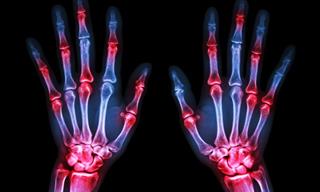
The 4 Stages and Progression of Rheumatoid Arthritis
Rheumatoid arthritis (RA) is a progressive autoimmune condition that can advance through four distinct stages, from early inflammation to severe joint damage.
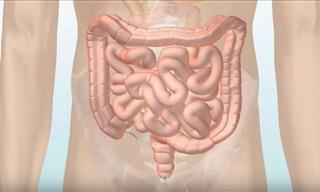
Learn How to Naturally Treat Toxin Accumulation in the Gut
The accumulation of toxins on the intestinal walls can lead to many problems. The following tips will help you prevent and deal with the problem.
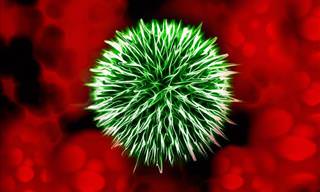
Sepsis: What is it and What are its Symptoms?
It is very important to recognize sepsis as quickly as possible, but how do you do this? Here are the 5 common symptoms of sepsis:
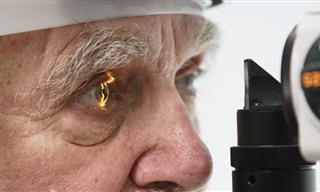
Age-Related Macular Degeneration: How to Treat It
The diagnostic methods, the importance of early detection, and new treatments that are changing how we manage this disease
 19:20
19:20
You Won't Believe What This Man Built By Himself!
You won't believe what construction project got this man to work alone and complete the craziest underground cabin. Come and check it out...

8 Shocking Items Unearthed During a Home Renovation
If you’re planning a home renovation, be prepared for the unexpected, as you may dig up some pretty surprising things, like the people in these 8 cool stories

12 Misnomers That Have Been Fooling Us All Our Lives
The true stories behind 12 popular misleading misnomers are explained here.

7 of the Most Famous Weddings of the 20th Century
Here’s a closer look at the most famous weddings of the century and the compelling stories behind them.

Can You Believe These Words Didn’t Exist Before the 1970s?
When a new words spreads it seems it's been around forever. But in reality, many of the words we use everyday are quite new. These didn't exist before the 1970s.
 6:21
6:21
Do You Know What Goes Into the Average Marshmallow?
Marshmallows are one of the most beloved treats in the US. But do you know what they're actually made of and hoe they are produced?

Wow! These People Had Someone Looking Over Them!
These lucky people had some guardian angel looking over them that day!
 9:40
9:40
The Different Origins of Fruit: A Fascinating Discovery...
Where does fruit come from? Find out here.

Expand Your Knowledge with These Intriguing Facts
They say those who keep learning stay young. So if you're a keen learner, check out these fascinating facts about history, nature, and a variety of other topics!

Do You Know the Truth About These Famous Figures?
Hollywood exaggerates and distorts many historical truths with its movies, but now you're about to find out the truth about some important figures...

Boost Your Knowledge & Confidence with These Facts
These 20 facts will help boost your knowledge.
 9:45
9:45
These Bizarre Historical Heists Almost Sound Made Up
Did you know that an entire church was once stolen brick by brick? Learn about some unbelievable historical heists here.

20 Age-Old Objects of Great Historical and Artistic Beauty
These 20 age-old artifacts have survived through the ages, and they’re here to tell the stories of their owners and creators.

The 10 Cult Movies Every Film Enthusiast Should Watch
These cult classics will change how you view cinema.

Incredible Story: The Woman Who Can SMELL Parkinson's
In this piece, we'd like to introduce you to Joy's story, the series of events that led her to "encounter" Parkinson's disease, and its significance for the future of the medical world.

The 10 Greatest British Monarchs in History
Do you know about the greatest monarchs in British history? Don't fret if you don't, because you're about to learn all about them right now.
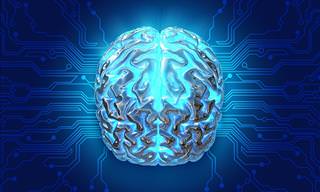
Video Collection: Learn Something New Today!
It's never too late to learn something new, so give these 16 educational videos a watch and see what you can learn today!

8 Facts You Learned at School that Are No Longer True!
The passage of time leads things that were once accepted as facts to actually be proven as incorrect. Here are 8 supposed facts that aren’t really true.

Did You Know These Interesting Facts About Colors?
A short article explaining why and how specific colors were chosen for everyday objects like cabs and police uniforms.
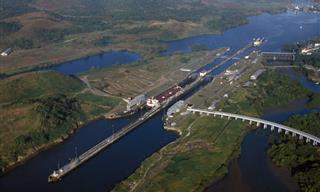
Panama Canal: Engineering Miracle with a Shocking History
You may not know it but the Panama Canal is one of the 20th century's greatest achievements. When you read its incredible history you will understand why.
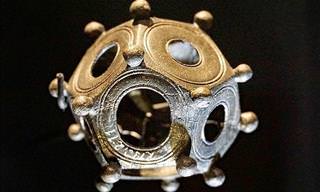
These Archeological Finds Continue to Baffle Researchers
Some archeological discoveries that have been made simply cannot be explained away by modern researchers. Here are 15 of these baffling finds.

These So-Called Facts Have Been Officially Disproved!
These beliefs we were taught as concrete facts were disproved and are no longer true!

This Will Change Your Perspective On Anger
Anger is an often misunderstood emotion. These facts about anger will change your views on this common emotion.

The Surprising Link Between English and Sanskrit
Sanskrit is an ancient Indian language, but most people don't know that this archaic language and English have a common ancestor

14 Obsolete English Terms We Wish Were Brought Back!
Over the centuries, so many eloquent and useful English words fell out of use. We wish these 14 clever (but sadly obsolete) terms were used more often.

These Inventions Changed the World Beyond All Recognition
Some inventions meant that the world changed beyond all recognition. In this interactive video post, you'll see nine of the greatest.

Valentine's Day: Get Lovely Backgrounds for Mobile and PC
we’ve prepared a diverse collection to suit every taste and turn your screen into a beautifully designed little love keepsake. Wishing you a happy Valentine's Day!

The Astonishing Life and Philosophy of Ludwig Wittgenstein
It is the true story of Ludwig Wittgenstein, the man who sat in the same classroom as Adolf Hitler, became the protégé of the philosopher Bertrand Russell, and changed the face of 20th-century philosophy

16 Jaw-Dropping Archeological Finds
Even if you weren’t a fan of the subject back in school, you’ll love the visual history lesson we prepared for you today.
 18:27
18:27
What is the Story Behind the Scilian Mafia?
Explore the origins of the Sicilian Mafia, known as Cosa Nostra.
 2:50
2:50
Laugh Out Loud With This Funny String Quartet Performance
Watch this truly hilarious musical performance by comedy string quartet known as the MozART group.

10 Unmissable Historical Fiction Novels You Must Read
If you’re a fan of history, then these books have to be on your to-read list.

9 Extraordinary Women Who Beat Men at Their Own Games
These 9 women are among the most important names in history, but do you know their names and inspiring stories.

Louis Armstrong Said it Best, Didn't He...?
This amazing song can really open your eyes to nature's beauty, and the beauty we make for ourselves.
 4:56
4:56
History’s First Author Is Largely Unknown, Who WAS She?
Meet the First Author in History - Enheduanna, an ancient Sumerian high priestess with a tragic and heroic life story...

Living to 100: The Most Famous Centenarians of Our Time
Meet the famous centenarians of the 20th century.

Forgotten Gems: 10 Classic Films You Missed
These underrated classics need your attention.
 5:57
5:57
Irena Sendler - The Woman Who Saved Over 2000 Lives
Get to know the amazing story of Irena Sendler, a social worker who saved the lives of over 2000 Jewish children During World War II

These Words Wouldn’t Exist Without These 10 Famous Authors
Learn of 10 commonly-used English words that were coined by famous authors and philosophers.

The Encyclopedia Won’t Tell You These Unique Facts
Here are 12 unique and curious facts about the world that will definitely surprise you.
To enable your Ad-Free Subscription, please fill the fields below
Your subscription was successful, now you can enjoy an ad-free experience!! Note: To make sure you get no ads, please make sure to log in to your account. If you are logged in already, then refresh the page. The subscription can be cancelled at any time.


